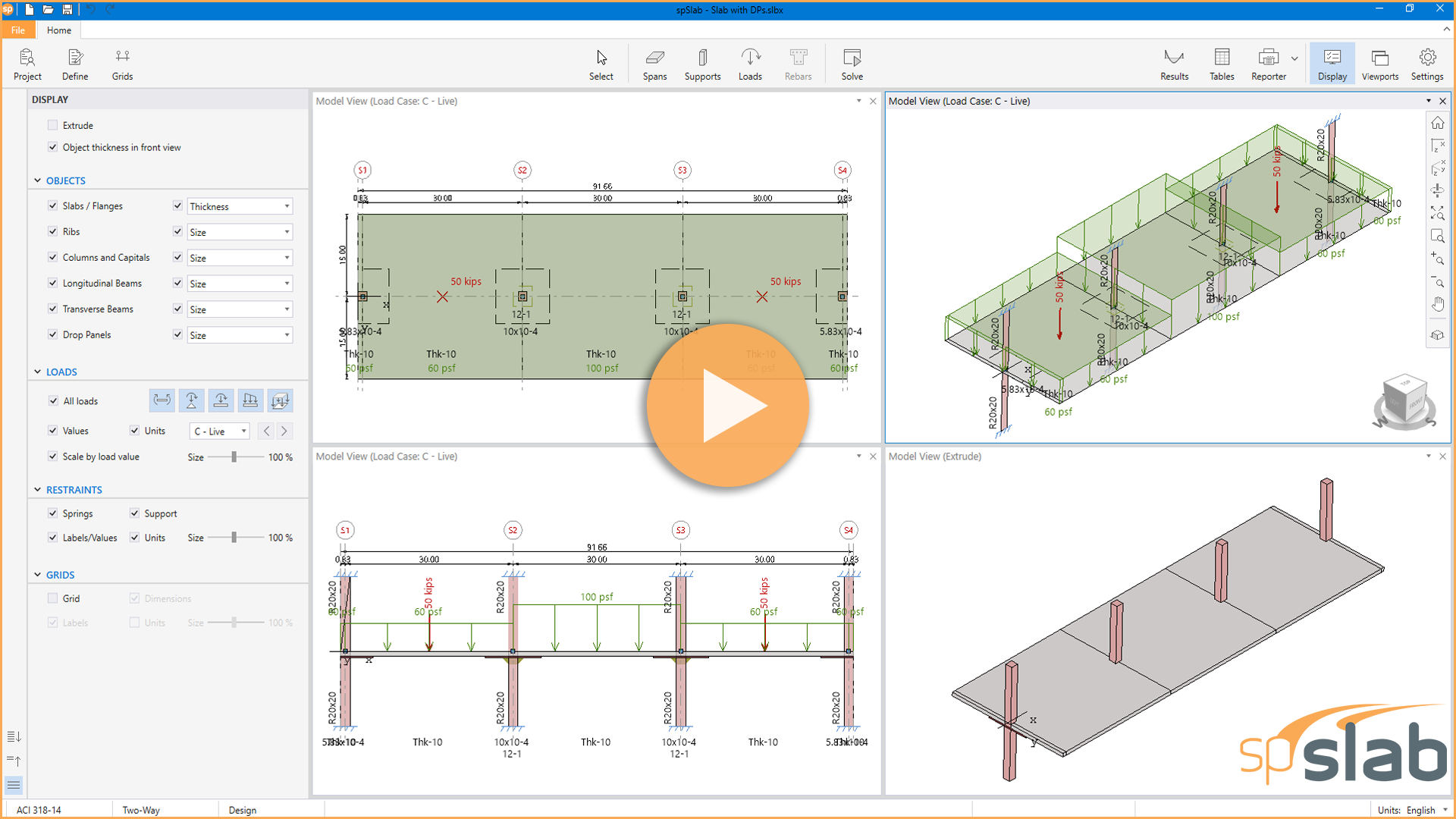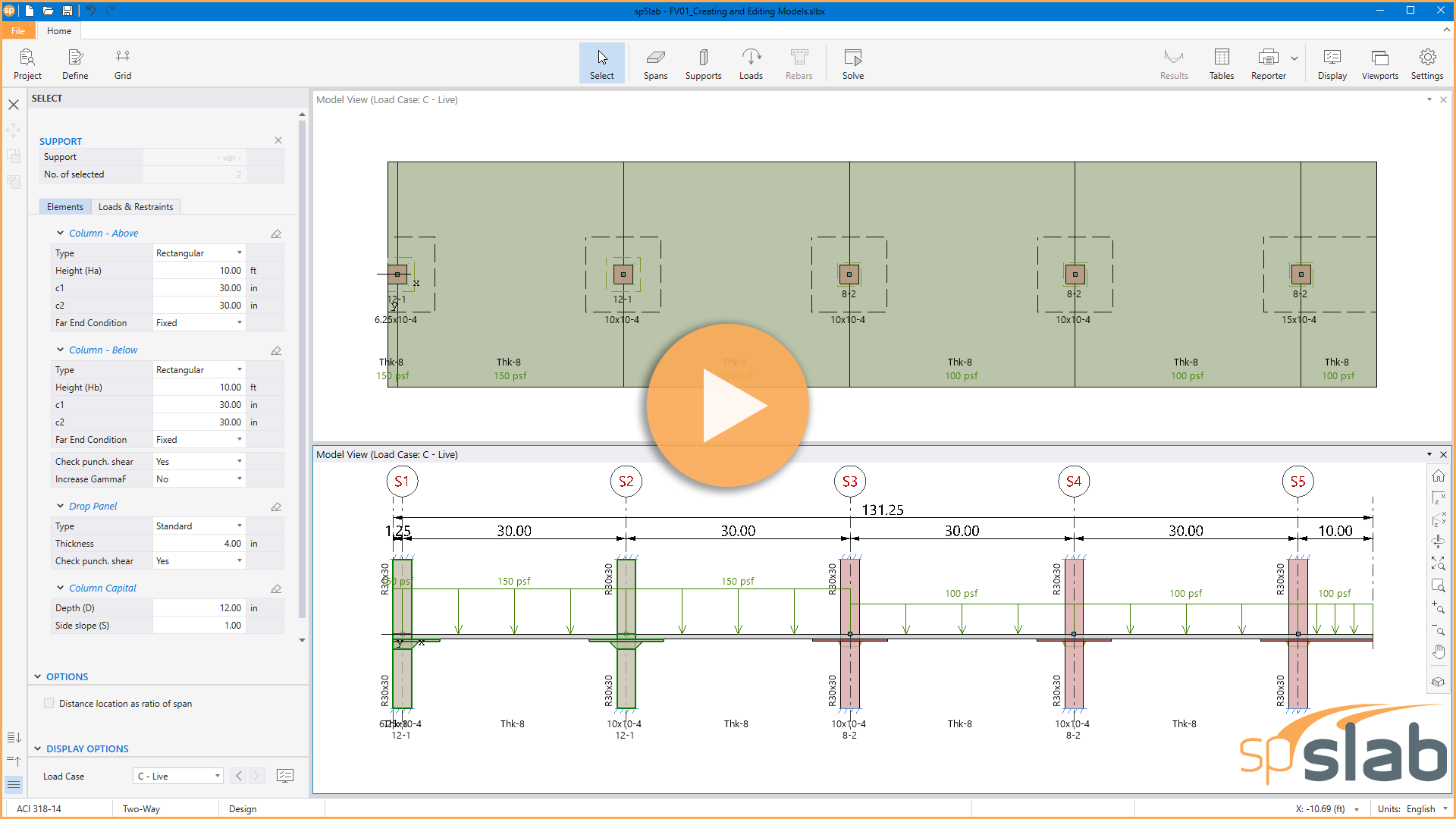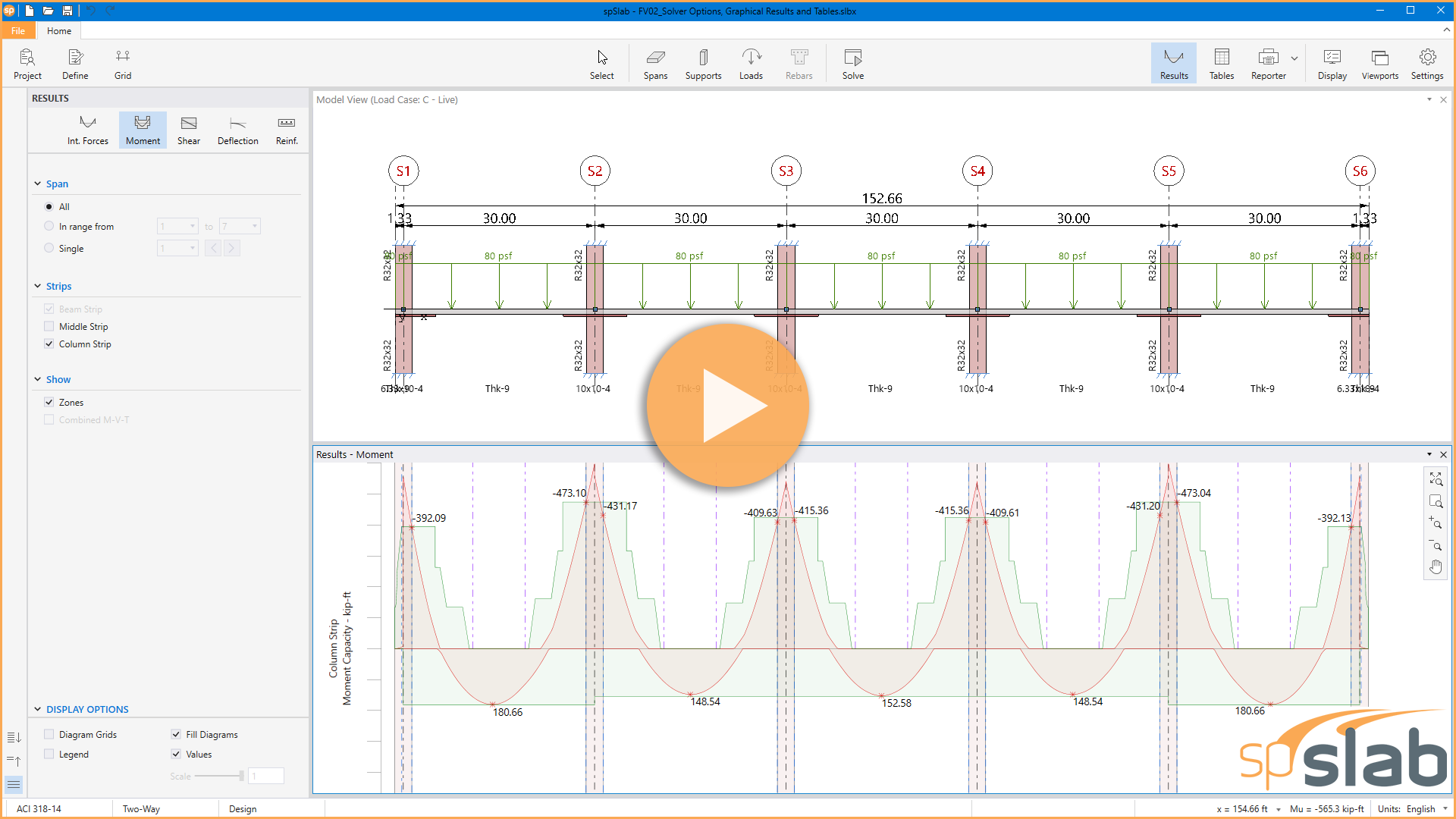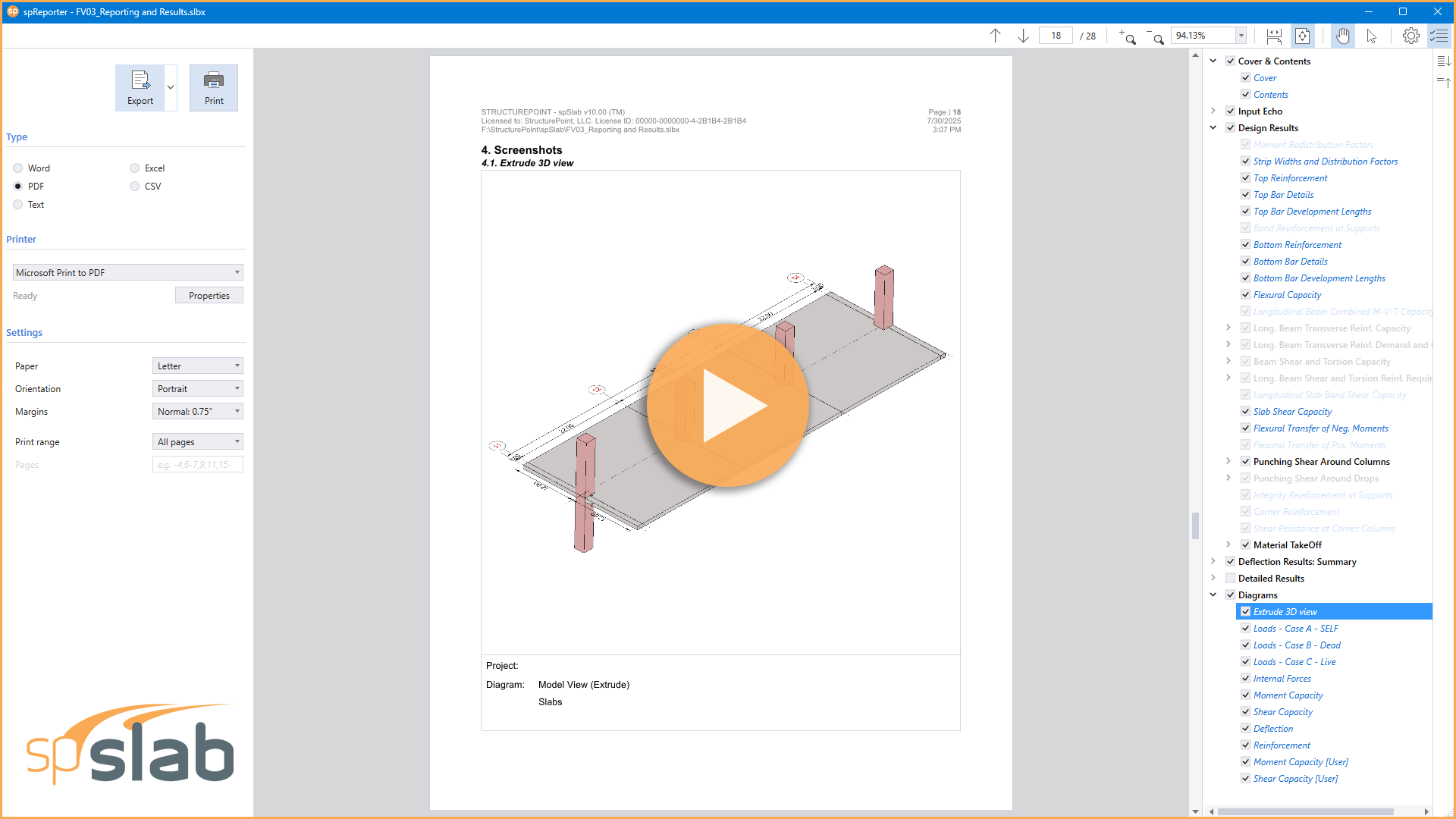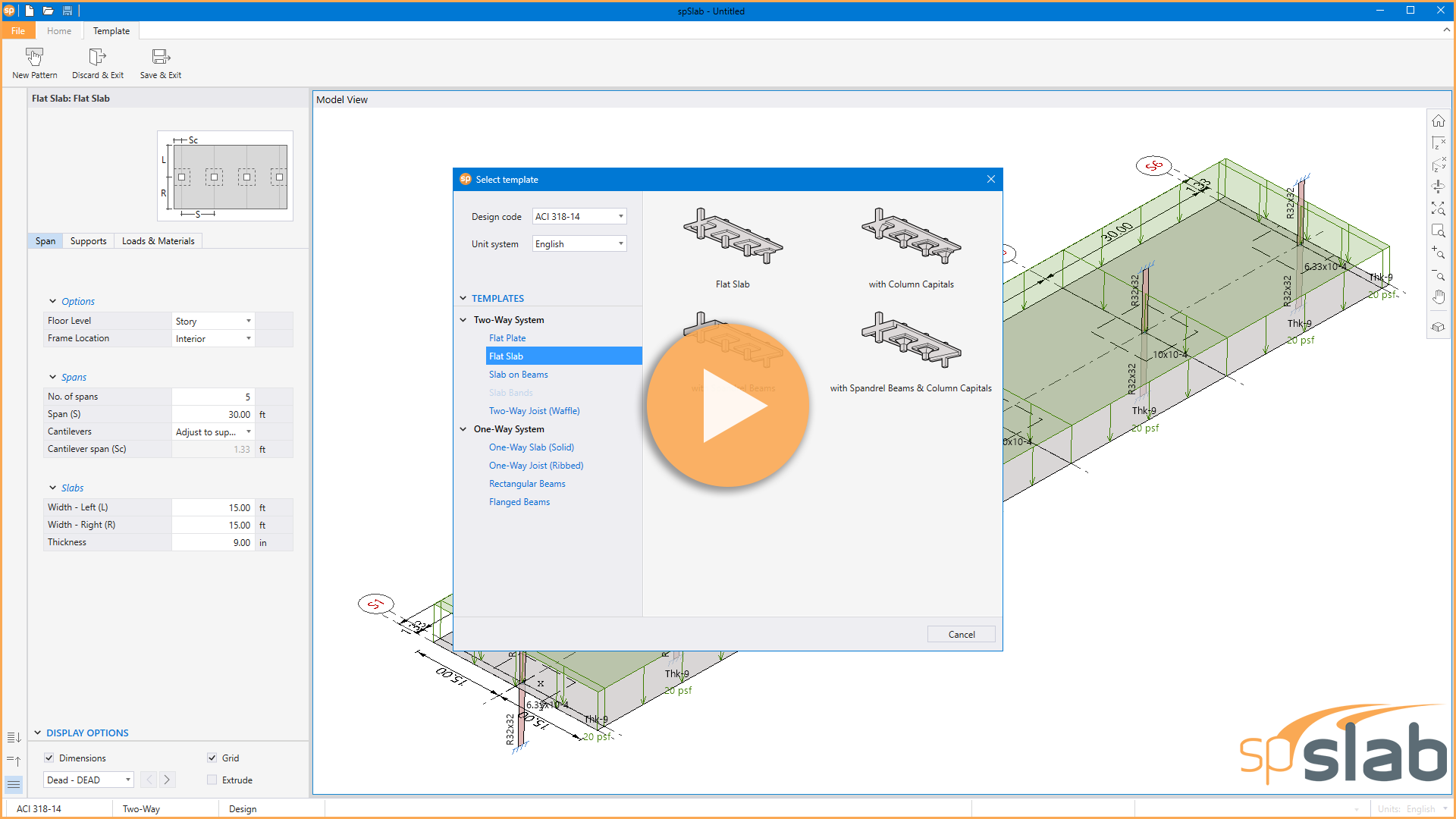Analysis and Design of Concrete Slab Systems
spSlab is structural engineering software for the analysis, design and detailing of reinforced concrete two-way slab systems, one-way slab systems, continuous beams, waffle slabs, and slab bands.
With a user-friendly graphical interface, engineers can define floor slab geometry, material properties, support conditions,
and loading scenarios (including point, line, and area loads). spSlab supports up to 20 spans and two cantilevers with live load patterning.
Utilizing the Equivalent Frame Method, spSlab follows the American
(ACI 318) and Canadian (CSA A23.3) standards to automate
structural
analysis and design of complex concrete floor
systems by calculating one-way shear, two-way punching
shear around columns and drop
panels, immediate and
long-term deflections, as well as flexural, shear, and torsional
capacities.
spSlab allows for moment redistribution, reducing negative moments and
minimizing reinforcement congestion at
supports, providing significant
material and labor savings. Engineers can also account for torsion effects in
the
shear design of beam systems, with shear capacity presented in terms of required
and provided reinforcement.
Investigate existing concrete floor systems with spSlab to extract maximum capacity of existing reinforcement
and minimize costly repairs and strengthening while maintaining code compliance. The sophisticated
options allow the engineer to exploit additional capacity in structural members and allow for the reuse of
existing building by delivering reliable solutions for both new structural designs and the investigation of
existing systems.
More
Create and Edit Concrete Slab Models in spSlab
Start with a template or create grids based on structural drawings to set up spans and support locations. Define and assign span elements (slabs, ribs and longitudinal beams/bands), sup-port elements (columns, capitals, drop panels and transverse beams/bands) and loads to complete the model.
spSlab Solver Options, Graphical Results and Tables
Once the model is ready, the Solve command opens the Design and Deflection options, allowing users to customize the analysis settings. The spSlab Equivalent Frame Method (EFM) solver is then launched using the Run command. Results are provided in both tabular form and as diagrams.
spSlab Reporting Results and Export Options
spSlab features a modern reporting tool that allows users to view, customize, print, and export reports in various formats. The tool helps generate professional project submittals with flexible options to include as much or as little detail as needed. Users can also add detailed screenshots of diagrams to better illustrate structural behavior within the reports.
spSlab Templates Module
Templates in spSlab offer predefined slab and beam systems, allowing users to create models simply, quickly, and accurately. Users can select from various slab and beam categories and customize parameters like spans, supports, loads, and materials. Models are ready for analysis within minutes, with design results available for immediate review.
To the top

